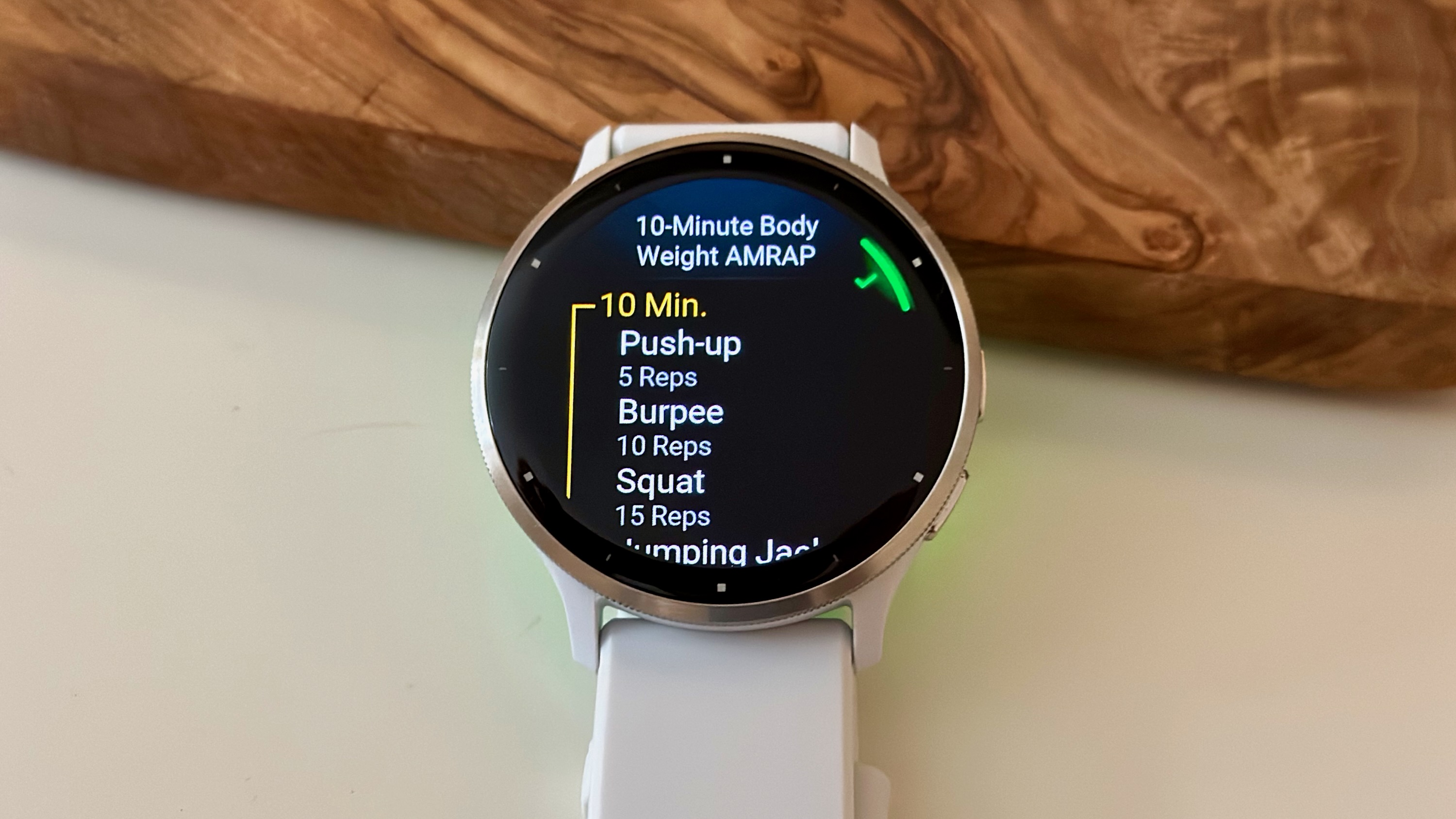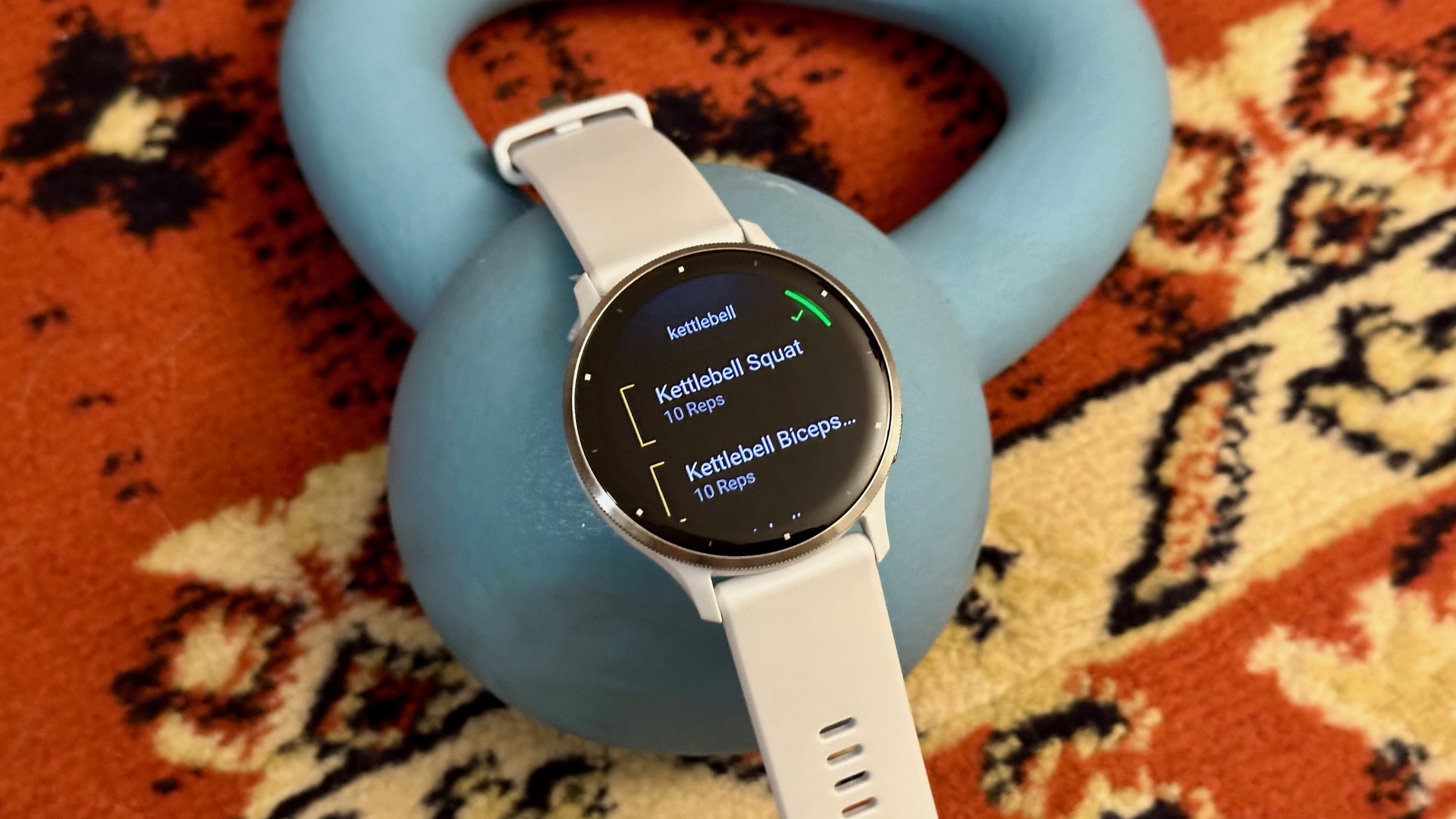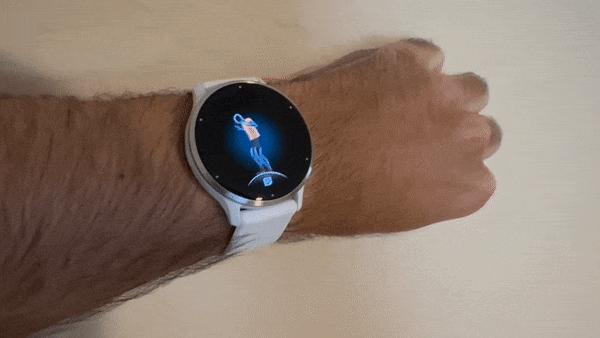Garmin needs to make its indoor workouts as compelling as its outdoor ones
Garmin watches have over 1,600 tracked exercises, from lifting weights to yoga moves. Too bad Garmin doesn't do more with them.


In his weekly column, our Senior Editor of Wearables and Fitness Michael Hicks discusses the world of smartwatches, apps, and fitness tech related to running and health, in his quest to get faster and more fit (and help you do the same).
When it comes to tracking indoor workouts, Garmin is incredibly ambitious, trying to track reps for thousands of exercise types that most smartwatches can't recognize. At the same time, though, it doesn't do nearly enough when it comes to indoor workouts. Garmin started to address this last year, but 2024's the year where it needs to go further.
Most fitness watches use your wrist movements to analyze your running form, track steps, or automatically detect when you start a workout. Some brands like Samsung even track specific reps like squats and curls, though usually not very well and not very many types.
With Garmin, most of its focus is on outdoor activities. But it also lets you download workouts to your Garmin watch that guide you through any of its 1,600 exercises across one activity. It lets you progress straight from burpees to mountain climbers to squats with a single button press, while your Galaxy Watch 6 makes you pull them up one by one.
It's a cool concept, as you can follow pre-made workouts or create your own. You can even pause a workout if you see an unfamiliar exercise to see an animated GIF of the proper form.
It's a strong foundation for fans of HIIT, yoga, or weight-lifting, who might not normally see Garmin watches as the right fit. But Garmin's execution of its indoor workouts isn't nearly as strong as its outdoor workouts, and it's a missed opportunity.
Finicky tracking

I initially tested Garmin's exercise tracking during my Garmin Venu 3 review last year. More recently, I decided to try completing 100 different Garmin exercise sets to see how accurate the watch was for different types. I ended up stalling out around 50, once I realized my initial review impressions of the feature weren't changing much — and my body got too sore to continue.
Slow, deliberate exercises like squats or sit-ups, where your entire body moves up and down, are tracked nearly perfectly. The same goes for something like jumping jacks, where your arm moves in a massive arc that's easy for the Venu 3's built-in accelerometer and gyroscope to interpret.
Get the latest news from Android Central, your trusted companion in the world of Android
For other exercises like push-ups, where your wrist moves much less than the rest of your body, Garmin watches struggle to accurately judge how many you've completed. Even a lunge, which is a significant motion, isn't always registered because your arm stays rigid while your body descends, not actually moving that much.
Tracking your whole body's movements via your wrist is an inexact science, but it's still a fun feature.
For complicated motions like burpees or mountain climbers, the Venu 3 grossly undersold how many times I moved, freezing at a certain number or even subtracting as though it was tracking me moving in reverse.
Then, of course, there's the simple fact that your Garmin watch can't track your whole body. For exercises like Single-arm Kettlebell Swing, your watch will only detect the swings from your wrist arm. And it can't differentiate between lifting your whole body and simply lifting your arm to check the watch face, leading to false positives.
Believe it or not, I don't hold these issues against Garmin. A smartwatch's accelerometer and gyroscope can only be so sophisticated before you're asking for the impossible; you'd need some kind of smart camera system for proper full-body tracking. Colleagues who use other watches at the gym, such as the Galaxy Watch 6, report the same issues.
So I'm happy to use an exercise routine as a guideline, not an exact count; I just move on to the next exercise when I know I've hit the target number, even if Garmin doesn't know it.
Limited workouts and weird UI

So what's my beef with Garmin's HIIT workouts, aside from these unavoidable issues?
For starters, Garmin has about 80 pre-made workouts in its app. That may sound like a lot, but if you're uninterested in specific activities like yoga (15) or pilates (14), or if you don't have the right equipment for certain activities, that number dwindles fast.
You'll even notice some workouts are just one or two exercises over and over, like "40/20 Squat Thrusts." As the name suggests, you do 40 seconds of squat thrusts, then 20 seconds of rest, then repeat nine more times. It's a good workout, but doing that over and over will make exercise feel like work.
Garmin has over 100 types of squats, from sumo squats to air squats, most of which don't show up in the official workouts. It's a missed opportunity.
You can, of course, design your own workouts. But as someone who tried to create a bunch of custom workouts for this article, trust me when I say it can be slow and tedious.
Garmin had daily suggested workouts for runners and cyclists; why not for HIIT or the gym?
What I want is for Garmin to channel fitness apps like Fitbod, which automatically generates workout routines with custom exercises based on your current soreness, muscle map targets, and at-home equipment.
Garmin already gives daily workout suggestions for running or cycling, targeted to your VO2 Max level, Body Battery, and past activities. Customized gym, HIIT, or body-weight workouts that pull from its 1,600+ library of exercises seem like a natural next step.
You could complete some beginner workouts as a baseline and tell your Garmin watch at the end how difficult you found it, so it can adjust your workload accordingly. There could even be Garmin Coach routines for trying to hit certain strength benchmarks, like being able to do X number of push-ups in a row or bench-press Y pounds.
Garmin Challenges would be a natural fit for, say, tracking how many push-ups you've finished in January, for folks working on their New Year's resolutions.

My other grievance is that Garmin has chosen to bury its exercise animations — one of my favorite features — for some inexplicable reason.
First, Garmin intentionally disabled animated examples for custom workouts. Thanks to Reddit, I know the workaround: you make a copy of an official workout, delete all of the exercises, add your own, and save it under a new name; that way, your Garmin watch registers the workout as "official" and shows the animations. But the fact that you have to do this in the first place is bizarre.
Next, when Garmin added muscle maps to workouts in the September 2023 update, it had the unintentional effect of making the animations harder to find. The muscle maps took the animations' original slot; now, if you've forgotten how to do a burpee, you have to pause the workout, scroll to the last widget where the muscle map is, then hit the Start button to see the animation above. Then you back out of that menu and scroll back to restart the workout.
It's tedious, and I ended up finding it more convenient to Google how to do some exercises instead. Especially because not all of the 1,600 exercises actually have animations.
Personally, I'd prefer seeing the exercise animation as a widget you can scroll to during the workout without pausing it. Garmin is catering to no-nonsense athletes who want to finish their cross-training or gym reps without watching an exercise video for guidance. Putting its cool animations front and center seems like a no-brainer.
Why am I nitpicking Garmin's ambitious-but-flawed indoor workouts, when other smartwatch brands do worse? Because I'm hopeful it'll achieve something no other fitness brand can.
Apple and Fitbit offer fun, motivational workout videos with music and coaching; they're generalized, not customized, and most of its customers are fine with that. Other fitness smartwatches have never offered customized workouts for any sport. A few like Amazfit are starting to try AI coaching, but that, too, only pulls general fitness data from the internet.
Garmin is the one brand with the potential to pull off personalized indoor workouts. Its 1,600 exercises and animations are a strong foundation, as are its "daily workout suggestions" for outdoor sports. The question is whether Garmin's team of coaches and algorithmic experts have the know-how to recommend gym workouts the same way they guide your efforts on the track or trail.
My hope is that Garmin doesn't squander this potential. By adding workout muscle maps in September and a new Workouts app in the December 2023 update, it signaled that it wants to cater more to indoor athletes. If it can continue to improve on rep tracking accuracy, offer more workouts, and start recommending custom routines to athletes, that would go a long way.

Michael is Android Central's resident expert on wearables and fitness. Before joining Android Central, he freelanced for years at Techradar, Wareable, Windows Central, and Digital Trends. Channeling his love of running, he established himself as an expert on fitness watches, testing and reviewing models from Garmin, Fitbit, Samsung, Apple, COROS, Polar, Amazfit, Suunto, and more.
